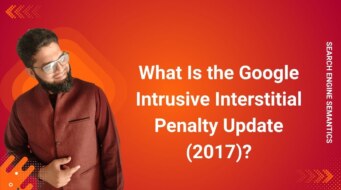What is Search Engine Optimization (SEO)?
Search Engine Optimization (SEO) is the strategic process of optimizing a website to improve its visibility in organic (non-paid) search engine results. When executed effectively, SEO helps websites appear higher in search engine result pages (SERPs) for relevant queries, thereby attracting targeted traffic without relying on paid advertisements.
At its core, SEO bridges the gap between what users are searching for and what your website offers—ensuring your content is discoverable, relevant, and valuable to both users and search engines like Google, Bing, and Yahoo.
Key Components of SEO
SEO consists of multiple interrelated components, each serving a unique role in boosting a website’s performance in search rankings.1. On-Page SEO
On-page SEO refers to optimizing the content and structure of individual web pages to improve their rankings for specific keywords.
-
Title Tag: The clickable headline that appears in SERPs. It should be concise, keyword-rich, and accurately represent the content.
-
Meta Description: A 150–160 character summary of the page that encourages clicks by previewing the value of the content.
-
Header Tags (H1–H6): Used to structure content hierarchically and improve readability. The H1 typically defines the main topic.
-
Keyword Optimization: Naturally incorporating primary and secondary keywords in headings, body content, and image alt tags.
-
SEO-Friendly URLs: Clean, descriptive URLs (e.g., /seo-guide/ instead of /page?id=123) improve clarity and crawlability.
-
Internal Linking: Connecting related content within your site to enhance navigation, distribute link equity, and guide users through a logical journey.
-
Image Optimization: Compressing images and using alt attributes to enhance performance and accessibility.
2. Off-Page SEO
Off-page SEO involves actions taken outside of your website to improve its authority, relevance, and trustworthiness in the eyes of search engines.
Important off-page signals include:
-
Backlinks: Links from reputable external websites act as endorsements, increasing domain authority.
-
Social Media Engagement: While not a direct ranking factor, social shares can increase visibility and drive referral traffic.
-
Online Reviews: Positive mentions and reviews build brand credibility and trust—especially important in local SEO.
-
Brand Mentions: Even without a hyperlink, mentions of your brand across blogs, forums, and news sites can contribute to recognition and reputation.
Google evaluates a website’s backlink profile (quality, diversity, and relevance of inbound links) to determine authority and ranking eligibility.
3. Technical SEO
Technical SEO ensures that a website meets the technical requirements of modern search engines. It focuses on site performance, crawlability, and indexation, laying the foundation for all other SEO efforts.
Key technical factors include:
-
Page Load Speed: Faster websites offer better user experiences and are favored by search engines.
-
Mobile Optimization: With mobile-first indexing, responsive design is essential for accessibility and ranking.
-
Crawlability: Search engines must be able to access and navigate your site using sitemaps and logical structures.
-
Schema Markup (Structured Data): Helps search engines understand content type and intent (e.g., product, recipe, FAQ).
-
Canonical Tags: Prevents duplicate content issues by indicating the preferred version of a page.
-
XML Sitemap: A list of all pages you want indexed, submitted to search engines for improved discovery.
-
robots.txt File: Specifies which pages or directories should or shouldn’t be crawled.
Proper technical optimization improves indexing, enhances performance metrics, and reduces SEO errors that hinder search visibility.
4. Local SEO
Local SEO targets users searching for businesses, products, or services in a specific geographic area. It’s especially critical for brick-and-mortar businesses or those targeting a local market.
Core components of local SEO include:
-
Google Business Profile (formerly Google My Business): Ensuring accurate business listings, reviews, photos, and service categories.
-
NAP Consistency: The business’s Name, Address, and Phone Number should be consistent across all online directories and citations.
-
Location-Based Keywords: Including local modifiers like city names or neighborhoods (e.g., “plumber in Houston”).
-
Local Reviews: Generating positive local customer reviews builds credibility and visibility in local map packs.
-
Local Citations: Listings in reputable directories (Yelp, Yellow Pages, TripAdvisor) support your local trust profile.
Appearing in the local map pack can drastically increase visibility for nearby customers.
5. Content SEO
Content SEO is the process of creating and optimizing valuable, informative, and engaging content that fulfills user intent and is structured for search engine accessibility.
Key content types include:
-
Blog Posts: Regularly updated blog content helps target long-tail keywords and answer user queries.
-
Landing Pages: SEO-optimized landing pages drive traffic for high-converting keywords.
-
Product/Service Descriptions: Clear, keyword-targeted descriptions that highlight features, benefits, and user value.
-
Visual Content: Videos, infographics, charts, and images enhance engagement and reduce bounce rates.
-
FAQs: Answering frequent questions boosts relevance and enables the use of structured FAQ schema.
The goal is to match the user’s search intent—whether informational, navigational, commercial, or transactional—while incorporating relevant keywords and a natural, readable tone.
Why SEO Is Important?
SEO offers a wide range of long-term benefits that make it essential for digital strategy:
- Increased visibility on SERPs leads to more clicks and organic traffic.
- Unlike paid ads, SEO offers sustainable traffic over time without ongoing ad spend.
- A well-optimized site is faster, more accessible, and easier to navigate.
- Users tend to trust websites that appear on the first page of search results.
- Organic leads tend to convert at a higher rate than paid traffic due to higher intent.
Final Thoughts on SEO
SEO is not just about pleasing search engines—it’s about serving real users with relevant, valuable, and accessible content. By integrating on-page, off-page, technical, local, and content SEO strategies, businesses can significantly improve their digital presence, attract qualified traffic, and convert visitors into loyal customers.
In a constantly evolving digital environment, SEO remains a dynamic, ongoing process. As algorithms grow smarter and competition increases, the most successful websites are those that consistently deliver quality, contextually-rich, and user-centered experiences.
Want to Go Deeper into SEO?
Explore more from my SEO knowledge base:
▪️ SEO & Content Marketing Hub — Learn how content builds authority and visibility
▪️ Search Engine Semantics Hub — A resource on entities, meaning, and search intent
▪️ Join My SEO Academy — Step-by-step guidance for beginners to advanced learners
Whether you’re learning, growing, or scaling, you’ll find everything you need to build real SEO skills.
Feeling stuck with your SEO strategy?
If you’re unclear on next steps, I’m offering a free one-on-one audit session to help and let’s get you moving forward.



